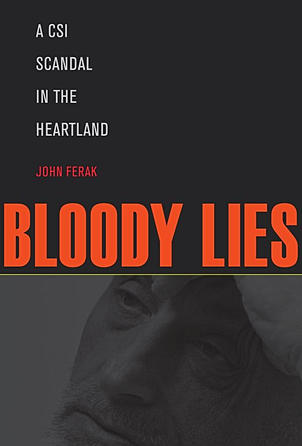Say Nebraska decided to hold
elections for something insane, like an official state crime. There would be
little debate; the top spot would go to the infamous 1958 Charles Starkweather
killing spree, which stretched from Lincoln to a few miles past the state
border into Wyoming. Inspiring both films and music (Bruce Springsteen’s Nebraska, the films Badlands and Natural Born
Killers, among others), the impact of that notorious crime has been widespread.
But if it was up to me, we’d all
take a closer look at another horrific tragedy: the murder of a happily married
couple, the Stocks, while they slept in their farmhouse in Cass County,
Nebraska. In Bloody Lies, author John
Ferak gives us the opportunity to take such a look. This crime, and most
especially the subsequent investigation, deserve as much attention, if not more,
than the one glorified by movies and music. The lessons learned are simply too
important to ignore.
Bloody Lies opens with a description of the murder. It is frank and
unflinching, but necessary for us to recognize the heinousness of the crime.
Included with this are three photos of the victims. Needless to say they are
hard to look at. Whether or not they were required is tough to say, but it
cannot be denied that the pictures allow us to see for ourselves exactly how
brutal the crime was.
From there, the book essentially
splits into two halves. The first covers the investigation of the crime through
interrogations, crime scene analysis, and so on. Ferak unreels the facts in it
a straight forward fashion, letting the story speak for itself—and what a story
it is. I was familiar with the generalities, having followed along in the Omaha-World Herald, yet I found myself enrapt.
As uncomfortable as the material can be, the quick pace of the book kept me
completely involved.
Ultimately, despite having solid
alibis and dubious motives, two individuals are held responsible. Why? Because
the police have a confession. We learn that this confession derived from an
ethically troublesome and frightening interrogation of one of the suspects.
Damn the facts, the investigators have what they want and they’re going to run
with it. Reading the excerpts of the interrogation quoted at length, it seems
clear that the suspect, Matt Livers, is all but fed a confession, the words very
nearly put in his mouth. It is difficult to resist feeling anger when Livers, a
young man that has a slight mental handicap, is instructed to “stand up” and
admit his crime. Incapable of understanding the abstract meaning of the phrase,
Livers literally stands up from his
chair.
As the book reaches its second
half, the case against the suspects unravels, thanks to excellent police work
from an Omaha-based CSI unit, brought in to aid the inept small town detectives.
This is when the book really hits its stride as a thorough investigator chases
down an obscure clue. Thanks to an intrepid employee at a jewelry company, new
suspects are located—suspects who are confirmed by physical evidence. It is
fascinating and chilling to read this section as it becomes clear that the
killers are heartless, disturbed individuals with no ties to the victims. Yet
the Cass County investigators are not satisfied. They continue to keep the
original suspects in jail, thanks to an unfounded belief that the crime was a
product of a vast conspiracy.
Eventually, it becomes clear that
the case has been poisoned by the work of ace CSI investigator David Kofoed, the Chief of the same lab that doggedly led to the real perpetrators. We learn that
Mr. Kofoed had a habit of finding blood evidence in unlikely places, each time
in cases that lack evidence but feature confessions from the suspects. Why
would he do this? Ferak makes a damning case against him, showing that he
enjoyed his rep and will; fight to the bitter end to preserve it, through a
number of court cases.
While this section may not be as
thrilling, it is crucial to the importance of this book. If there is one thing
we should expect of law enforcement, it might be this: evidence should be
impartial, never planted or otherwise tampered with. It should speak to the
facts and nothing more. Ultimately, in large part from Kofoed’s actions, two
innocent men have had their lives turned upside down, resulting in more victims
from this horrific crime. The author makes the case clearly, without bias, that
a tremendous wrong has been done.
Bloody Lies is an entertaining read, informative and important. I
give it my highest recommendation. I hope that it is read and studied by all of
us, especially those who work in law enforcement.
“Tell the truth and don’t be afraid.” So a mentor of the author’s
once instructed. With Bloody Lies, Ferak
has done exactly that: he told the truth and was not afraid.

No comments:
Post a Comment